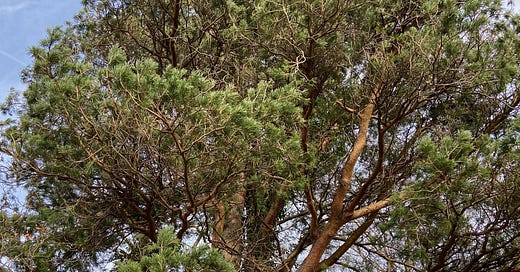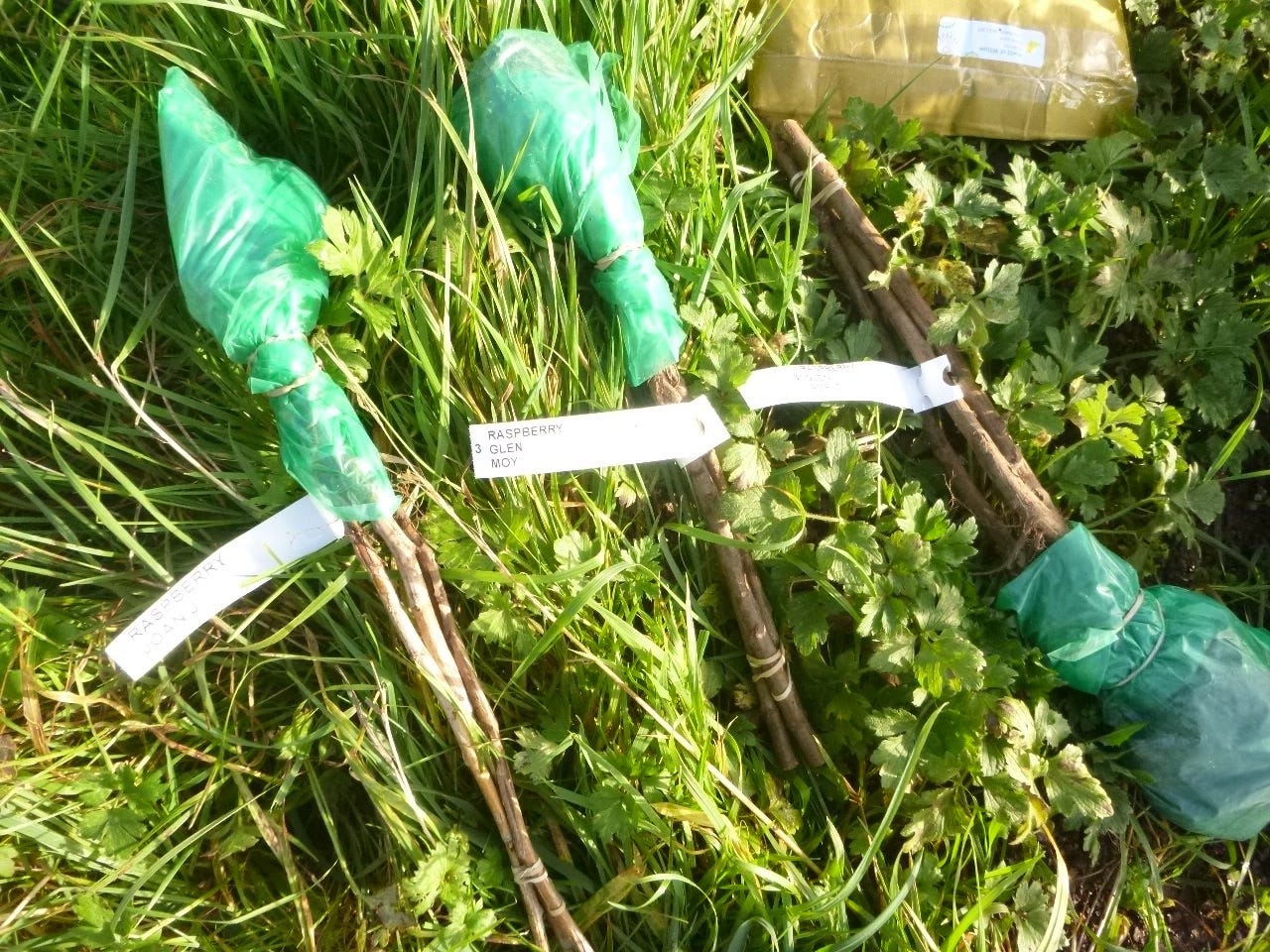Looking out of my window I can see trees flailing in the wind, as Storm Ciarán passes through the South West of England. And the rain is drenching. Now, I am thinking, is almost a great time for planting out trees and shrubs - I think ‘almost’ because the general temperature is dropping to wintery levels and there is plenty of moisture about. In the northern areas of the UK there is some chance of frost. Yet, even in most parts of Scotland, the night-time temperatures are still a few degrees above zero. But, putting young woody plants into the ground now risks them still trying to grow and, worse, they can becoming marooned in water - the roots cannot breathe - possibly fatal.
Patience is needed and then mulch care
So I will wait a bit, and aim for late November onwards. I have plants in pots including a rose, Californian lilac, mulberry, hydrangea and I won’t put them out until the conditions are dryer and colder. That should give the plants a chance to establish. If conditions don’t improve I can probably leave the plants in pots until February. Then I will have to keep an eye on new planting right through the summer to make sure there is enough moisture. Mulching at planting time certainly can help suppress encroaching plants and maintain moisture in the soil. Over the years I have used various mulches including permeable plastic squares which have to be weighted down or tend to lift up as neighbouring plants (dare I say weeds) push through the soil. Black plastic is ideal for fast growing cuttings of willow (Salix species). My favourite home-made mulch is several layers of cardboard topped with compost or straw. A tear in the cardboard usually allows a tight fit around a plant stem, and the fibrous material absorbs water and then gradually decomposes. It is a cheap alternative and can be renewed as many times as you like. HINT: tear off the parcel tape from cardboard before use as it does not deteriorate and litters the soil with unsightly plastic.
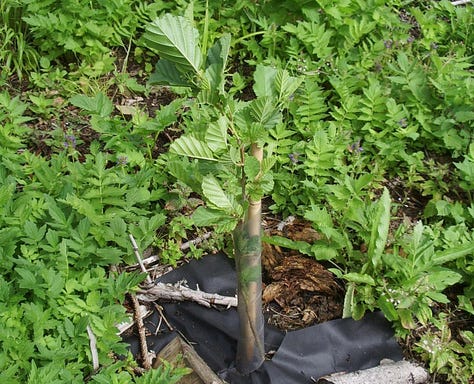
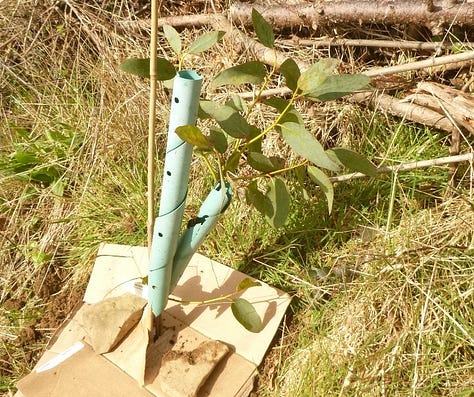
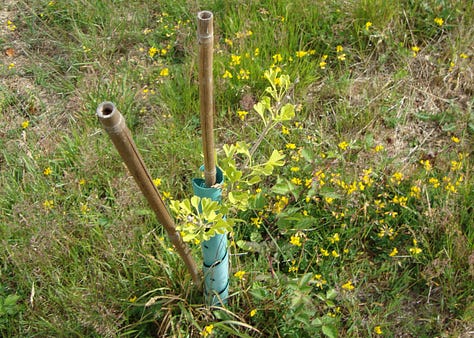

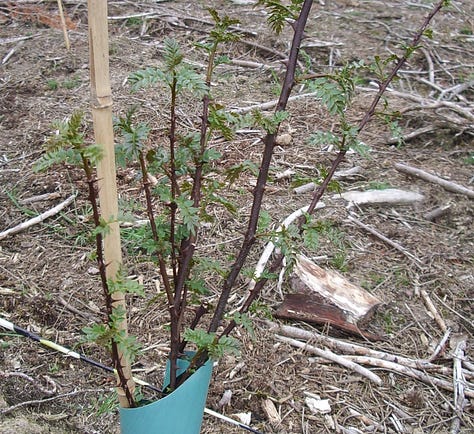

Not ideal for leafy plants
There is a problem with this general approach of winter planting for plants if they have leaves. Planting is best done after leaf fall when trees are dormant. But young conifers and other evergreen or bushy shrubs with leaves can suffer badly from windrock. The leaves act like sails and move the plant continuously so that roots cannot properly establish. I remember planting out Oregon grape (Berberis aquifolium) during autumn some years ago. The leaves were glossy green and healthy but then I became increasingly horrified as the plants gradually turned brown and died. Firm planting and staking can help. Another way around this problem is to prune a plant well so that leaves are kept to a minimum - and the plant should soon recover. Younger and less hardy plants like my hibiscus seedlings will have to stay in the greenhouse over the winter. They will be planted in spring after frosts in order to establish well before a winter outdoors.
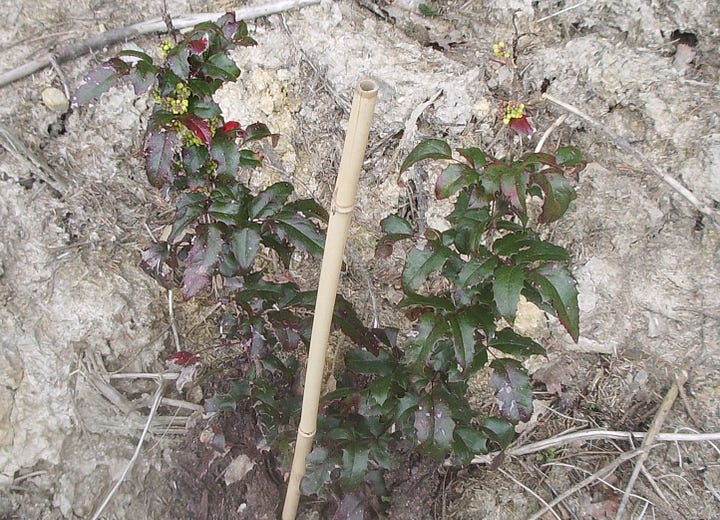
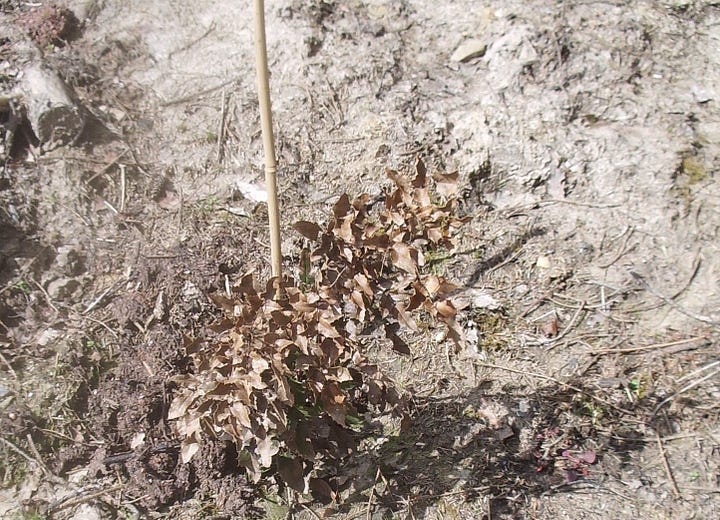
Planting in quantity
If you are planting dozens of trees then you need shortcuts such as using young 'whips' or unbranched bare root trees. The ideal size of a bare root plant is 60-90 cm tall, which can seem rather small (and some nurseries will do 40-60 cm size too). But this is an ideal size for planting. It provides the quickest way to put trees in the soil by hand - a spade cut of a slit into the ground will likely give the right depth for the roots, pushing the spade forward and back to widen the slit enough for placing the root and then firming the soil around the stem. It is important to keep bare roots covered until the last minute of planting - they are very vulnerable to drying winds. Once in the soil these young slender plants are less likely to suffer windrock and more likely to get off to a good start.
Hedging supplies can be cost-effective
Plants such as whips from seed supplied for hedging are worth looking for. And they are considerably cheaper - for a range of native and introduced trees and shrubs look for suppliers online. This way you can get many useful medicinal species, and the surplus plants might make gifts or saleable items. My search this morning drew up these offers of hedging: Alder buckthorn (Frangula alnus), Cornelian cherry (Cornus mas), Crab apple (Malus sylvestris), Cramp bark (Viburnum opulus), Dog rose (Rosa canina), Elder (Sambucus nigra), Hawthorn (Crataegus monogyna), Juneberry (Amelanchier lamarckii), Lime (Tilia cordata), Sea buckthorn (Hippophae rhamnoides).

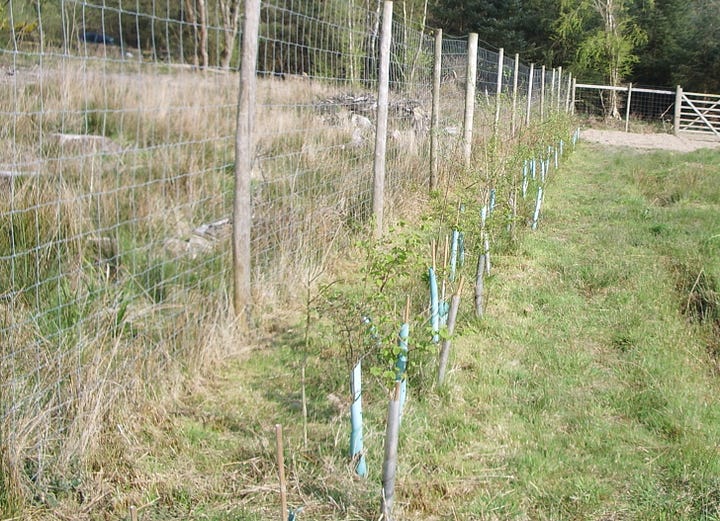
If you have space for a hedge then you can budget plan, estimate about 5 plants per metre, planted zig zag fashion. You will probably also need some kind of tree guards to stop rodents nibbling at these small plants. Most suppliers of hedging have minimum order requirements and may only provide in multiples of 5 or 10 plants. For larger quantities of 25 or more the costs can be lower, around £1-2 per plant depending on species. If the plants arrive too soon then they can be layered almost horizontally in a shallow pit to keep the roots moist and alive.
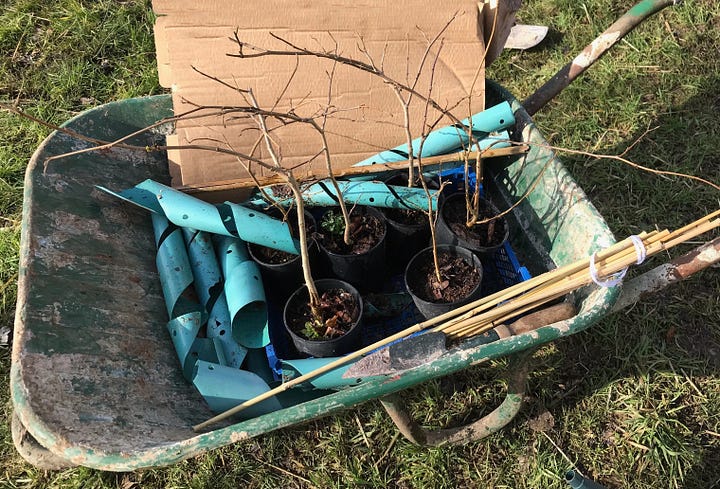
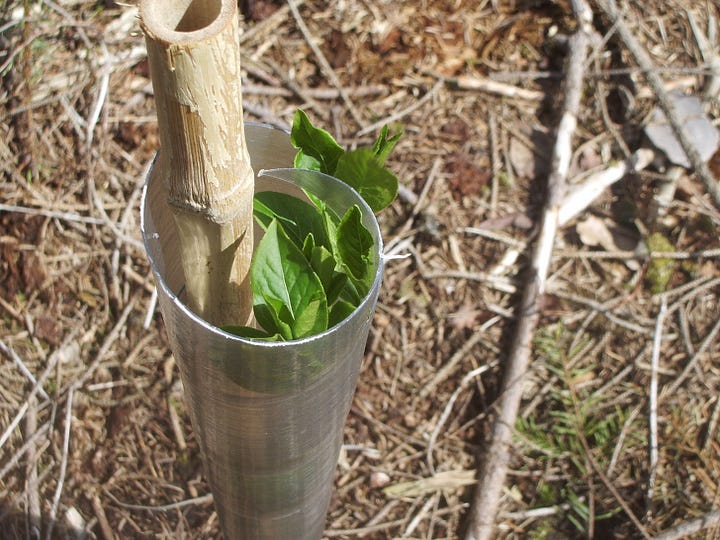
To plant or not to plant yet?
That is the question. Here in Devon it is too soon to plant trees. While it is too early for planting here now, perhaps an alternative is some daydreaming and a bit of online searching for medicinal tree sources. I am itching to get planting but have to sit on my hands in front of the computer for a bit longer!


